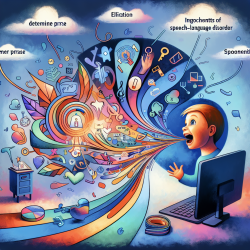Pediatric cardiac arrest is a critical emergency that demands immediate, specialized care. The comprehensive review "Reviving Hope: A Comprehensive Review of Post-resuscitation Care in Pediatric ICUs After Cardiac Arrest" provides valuable insights for healthcare providers to improve their practice and outcomes for pediatric patients. This blog synthesizes key findings and offers practical steps for implementing research-based strategies in clinical settings.
Key Findings from the Review
The review emphasizes several critical aspects of post-resuscitation care:
- Neurological Assessment: Immediate and continuous neurological assessment using tools like the Glasgow Coma Scale (GCS) and continuous electroencephalography (EEG) is vital for detecting and managing brain injuries.
- Cardiovascular Care: Hemodynamic stability through fluid resuscitation, inotropic support, and continuous monitoring of vital signs and biomarkers like troponin and BNP is crucial.
- Respiratory Support: Optimizing mechanical ventilation settings and oxygenation targets while preventing complications like ventilator-associated pneumonia is essential.
- Therapeutic Hypothermia: Implementing targeted temperature management to mitigate neurological injury and improve outcomes.
Implementing Research-Based Strategies
To translate these findings into practice, healthcare providers can focus on the following areas:
1. Enhanced Neurological Monitoring
Utilize continuous EEG and near-infrared spectroscopy (NIRS) to monitor cerebral oxygenation and detect early signs of neurological complications. Regularly assess neurological status using the GCS and other age-appropriate tools.
2. Comprehensive Cardiovascular Management
Implement goal-directed therapy with continuous hemodynamic monitoring to tailor interventions. Use biomarkers like troponin and BNP to assess myocardial injury and guide treatment decisions.
3. Optimized Respiratory Support
Adjust ventilator settings based on continuous arterial blood gas (ABG) analysis and end-tidal carbon dioxide (EtCO2) monitoring. Focus on preventing ventilator-associated complications through rigorous infection control practices.
4. Therapeutic Hypothermia
Apply targeted temperature management protocols to reduce the risk of secondary brain injury. Monitor and maintain the patient's temperature within the therapeutic range using specialized cooling devices.
Encouraging Further Research
Healthcare providers are encouraged to engage in continuous education and research initiatives to refine and improve post-resuscitation care. Collaboration with multidisciplinary teams and participation in clinical trials can contribute to the evolving evidence base and enhance patient outcomes.
To read the original research paper, please follow this link: Reviving Hope: A Comprehensive Review of Post-resuscitation Care in Pediatric ICUs After Cardiac Arrest.










